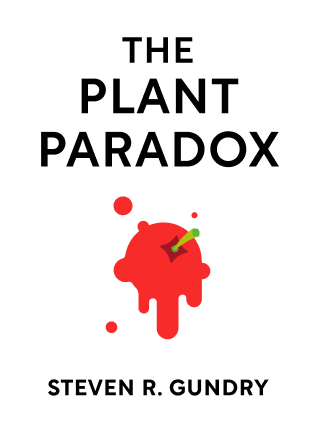

This article is an excerpt from the Shortform summary of "The Plant Paradox" by Steven R. Gundry. Shortform has the world's best summaries of books you should be reading.
Like this article? Sign up for a free trial here .
Where do lectins come from? What are the major sources of lectins?
There are plenty of sources of lectins around us. You can find lectins in plant-based sources, animal sources, and man-made substances.
Read more about the sources of lectins below.
Where Do Lectins Come From?
Lectins are large proteins contained in the seeds, grains, skins, rinds, and leaves of most plants, as well as in the meat, milk, and eggs of grain- and soy-fed chickens, cows, pigs, and seafood.
For millennia, humans’ immune systems have adapted to their changing diet, but relatively recently, humans’ diets have changed drastically and exposed our gut bacteria to new compounds that it hasn’t yet evolved to tolerate.
Sources of Lectins Became More Influential
There are four factors that brought about this major change.
- The Agricultural Revolution not only introduced grain and beans into the human diet for the first time, but it also made them the primary food source; this was a shift from a diet of mainly leaves, tubers (like sweet potatoes), and some animal fat and proteins. This meant that one of the sources of lectins were now a dietary staple.
- A mutation in Northern European cows caused them to produce a different kind of protein in their milk, called casein A-1; during digestion, casein A-1 turns into a protein similar to lectin that causes your immune system to attack your pancreas.
- When Europeans landed in the Americas, they brought foreign food from the New World back with them that people in Europe, Asia, and Africa had never before been exposed to and, thus, hadn’t adapted to tolerate. These included
- The nightshade family, including tomatoes, potatoes, eggplants, and peppers
- The bean family, including peanuts and cashews
- Grains
- Pseudo-grains, including quinoa
- The squash family, including pumpkins, acorn, squash, and zucchini
- Chia and some other seeds
- The rise of processed food and genetically modified organisms (GMOs) has introduced a whole new array of lectins that our bodies haven’t adapted to tolerate. At the same time, humans are being exposed to chemicals that destroy certain gut bacteria that would’ve otherwise helped us process some of these lectins. As a result, we’re less able to process lectins at the same time we’re consuming them more heavily than ever before.
Lectins in Plants Are a Defense Mechanism
Although plants don’t have thought processes the way humans do, these behaviors show that they can react to their environment and act to encourage their offsprings’ survival.
When a bug is eating leaves on one side of a plant, that plant will double the production of lectins on the other side of the plant almost immediately to deter the predator from eating even more. Similarly, one study of thale cress showed that the plant could detect when a caterpillar was eating one of its leaves and reacted by increasing production of mildly toxic oils and sending them to its leaves.
Additionally, researchers have found that plants have a “clock gene” that recognizes the time of day and produces more toxins at times when their predators are more likely to be looking for food.
Animal Sources of Lectins
Just as lectins compound in our bodies when we eat certain plants, they do the same to animals—meaning that grain- and soy-fed chickens, cows, pigs, and seafood contain lectins in their meat, milk, and eggs. You also must be wary of these meat and protein sources, and opt for pastured (or grass-fed) meat; although grass still contains lectins, they contain anti-inflammatory omega-3 fats as opposed to the inflammatory omega-6 fats in corn and soy.
Manufactured Sources of Lectins
In the past 50 years, the rise of processed food and genetically modified organisms (GMOs) has introduced a whole new array of lectins that our bodies haven’t adapted to tolerate. Compared to the three factors we just discussed, processed food has had the most dramatic impact on people’s health, because diets have changed so drastically at such a rapid pace: Fast food, microwave meals, and other processed foods have become a major part of many people’s diets and one of the major sources of lectins.
Additionally, humans are being exposed to more chemicals that destroy certain gut bacteria that would’ve otherwise helped us process some of these lectins. As a result, we’re less able to process lectins at the same time we’re consuming them more heavily than ever before. Where do lectins come from? That’s less important than our ability to digest them.
These chemicals are found in:
- Nonsteroidal anti-inflammatory drugs (NSAIDs), such as Advil, Motrin, ibuprofen, Aleve, Naprosyn, Mobic, Celebrex, and aspirin
- Antibiotics
- Fertilizers
- Herbicides
- Food additives
- Skin-care products
- Air fresheners
- Hand sanitizers

———End of Preview———
Like what you just read? Read the rest of the world's best summary of Steven R. Gundry's "The Plant Paradox" at Shortform .
Here's what you'll find in our full The Plant Paradox summary :
- Why eating more vegetables isn't enough, and why some vegetables are toxic to your body
- The science behind lectins and how they tear apart your body, making you fat and sick
- The 6-week program to get your body back on healthy grack






